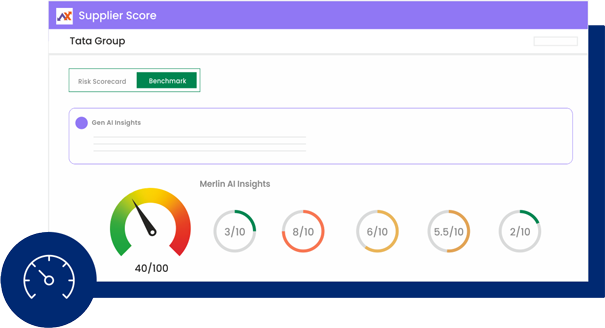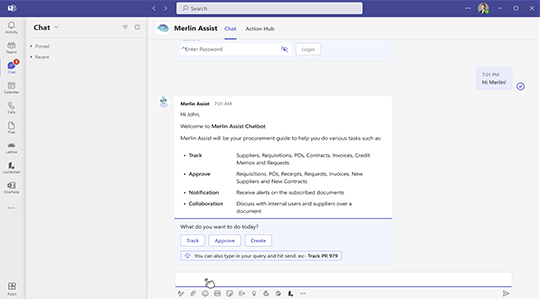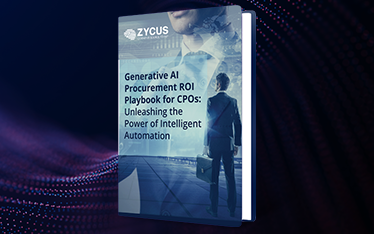End-to-End Supplier Risk Management Software Powered by GenAI

Our Marquee Clientele

Generative AI Powered Real Time Supplier Risk Analysis Across Millions of Data Sources
Tired of fragmented risk tools? Unify your approach and gain competitive edge with Zycus' integrated Supplier Risk Management solution

Complete Risk Orchestration Throughout S2P
Get complete integration of iRisk + Merlin Risk Radar with your existing S2P system for a better & unified risk management experience

Unparalleled Risk Visibility - Internal & External
Gain a 360° view of supplier risk with iRisk's internal KPI and performance analysis and Merlin Risk Radar's external risk monitoring from millions of online sources

Actionable AI Insights & Mitigation Steps at Every Stage
Zycus leverages GenAI technology to provide data-driven insights and recommendations for effective risk mitigation throughout the S2P process
Empower Every Step of Your S2P Process with iRisk + Merlin Risk Radar

IDENTIFY & ASSESS
Pre-Sourcing & Onboarding

MONITOR & REPORT
Throughout S2P

RE-ASSESS & MITIGATE
Continuous Improvement
The Zycus Edge in Services Procurement

Features that Set Zycus Merlin Risk Radar Apart
Resources
Success Stories


FAQ's
Risk Radar, specifically Zycus Merlin Risk Radar, is a supplier risk monitoring and risk intelligence solution that empowers businesses to proactively identify, assess, and mitigate potential risks associated with their suppliers. It leverages various data sources, including news feeds, social media, and financial reports, to provide a holistic view of supplier risk across various categories like financial instability, operational disruptions, geopolitical tensions, information security breaches, and legal & regulatory non-compliance.
- Financial instability: A supplier’s financial problems could lead to delays in deliveries, product quality issues, or even bankruptcy.
- Operational disruptions: Strikes, natural disasters, or other disruptions at a supplier’s facilities can impact your production or delivery schedules.
- Geopolitical tensions: Political unrest or instability in a supplier’s location can create logistical challenges or even force you to source materials elsewhere.
- Information security breaches: A data breach at a supplier can expose your company’s sensitive information.
- Legal & regulatory non-compliance: A supplier’s non-compliance with regulations can lead to fines, reputational damage, or even legal action against your company.
- Supplier risk assessments: Regularly evaluating your suppliers’ financial health, operational stability, and other risk factors.
- Supplier diversification: Sourcing materials and services from multiple suppliers to reduce dependence on any single source.
- Contractual safeguards: Including clauses in your contracts that address potential risks and outline mitigation strategies.
- Continuous monitoring: Staying up to date on any changes that could impact your suppliers’ risk profiles.
- Proactive Risk Identification: Identify potential risks associated with suppliers before they disrupt your operations.
- Data-Driven Decision Making: Gain real-time insights into supplier risks to make informed sourcing and contracting decisions.
- Reduced Supplier Risk: Mitigate potential risks and minimize the impact of supplier disruptions on your business.
- Improved Supplier Performance: Drive continuous improvement in supplier performance through proactive risk management.
- Enhanced Cost Savings: Reduce costs associated with supplier disruptions and rework by proactively addressing potential issues.
- Streamlined Supplier Management: Simplify and automate supplier risk assessment and monitoring processes.
- Financial health: Analyzing financial statements, credit ratings, and other indicators of financial stability.
- Operational capabilities: Assessing the supplier’s production capacity, quality control processes, and disaster recovery plans.
- Compliance history: Reviewing the supplier’s history of compliance with regulations and ethical business practices.
- Cybersecurity practices: Evaluating the supplier’s cybersecurity measures to protect sensitive data.
- Geographic location: Considering the potential risks associated with the supplier’s location, such as political instability or natural disasters.
- Reduced Supply Chain Disruptions: Proactive identification of supplier risks helps you minimize disruptions to your supply chain and ensure smooth operations.
- Improved Decision-Making: Supplier risk assessments provide valuable data to help you make informed sourcing and contracting decisions.
- Enhanced Cost Savings: Identifying and mitigating supplier risks can help you avoid costly disruptions and delays.
- Improved Supplier Relationships: Supplier risk assessments can help you build stronger relationships with your suppliers by fostering a culture of transparency and accountability.
- Compliance with Regulations: Certain industries have regulations that require businesses to conduct supplier risk assessments.
- Develop a Risk Assessment Framework:
- Define the categories of risk you will assess (e.g., financial, operational, compliance, cybersecurity, geopolitical) based on your industry and specific needs.
- Establish criteria for evaluating each risk category. This might involve assigning point values or using a qualitative scoring system (e.g., high, medium, low) based on the severity of the risk.
- Gather Information About Your Suppliers:
- Collect data from various sources, including:
- Public records: Financial statements, credit reports, news articles, and regulatory filings.
- Supplier self-assessment questionnaires: Request suppliers to provide information about their financial health, operational capabilities, and risk mitigation practices.
- Third-party data providers: Utilize specialized services that offer in-depth supplier risk data.
- Internal data: Leverage existing information from your procurement and supplier management systems.
- Analyse the Data:
- Evaluate the information you have gathered based on the criteria established in your risk assessment framework. This may involve:
- Assigning scores to each risk category based on the severity and likelihood of the risk.
- Identifying any red flags or areas of concern that require further investigation.
- Develop a Risk Mitigation Plan:
- Based on your risk assessment results, prioritize your suppliers and develop mitigation strategies for identified risks. These strategies can include:
- Diversifying your supplier base to reduce dependence on any single source.
- Negotiating contractual safeguards that address potential risks and outline mitigation actions.
- Implementing early warning systems to monitor for potential disruptions.
- Establishing clear communication channels with suppliers to stay informed of any changes that could impact their performance.
- Tip: Zycus Merlin Risk Radar can significantly streamline this process by offering features like:
- Pre-defined risk categories and scoring methodologies to ensure consistency and efficiency in your assessments.
- Automated data collection from various sources, including public records and internal data.
- AI-powered risk analysis to identify potential issues and prioritize high-risk suppliers.
- Configurable dashboards and reports to visualize supplier risk data and track mitigation efforts.
- By leveraging Zycus Merlin Risk Radar, you can conduct comprehensive and efficient supplier risk assessments, enabling you to proactively address potential risks and build a more resilient supply chain.
- Define Risk Categories and Likelihood: Identify the different categories of risk you will assess (e.g., financial, operational, compliance) and establish a scale to represent the likelihood of each risk occurring (e.g., high, medium, low).
- Define Impact Levels: Define a scale to represent the potential impact of each risk on your business (e.g., high, medium, low). This could include factors like cost disruptions, production delays, or reputational damage.
- Rate Your Suppliers: Evaluate each supplier based on the likelihood and potential impact of each risk category.
- Plot Suppliers on the Matrix: Place each supplier on the matrix based on their risk scores. Suppliers with high likelihood and high impact risks should be prioritized for further mitigation strategies.
- Proactive Risk Identification: Early identification of potential risks allows you to work with suppliers to address issues before they impact performance.
- Data-Driven Mitigation Strategies: Leverage AI-powered insights and recommendations to develop targeted mitigation plans to address specific supplier risks.
- Continuous Monitoring & Improvement: Track supplier performance over time and identify areas for improvement.
- Contractual Safeguards: Identify areas within contracts that can be strengthened to incentivize better performance and address potential risks.
- Supplier Collaboration Tools: Facilitate communication and collaboration with suppliers to address identified risks and improve overall performance.













